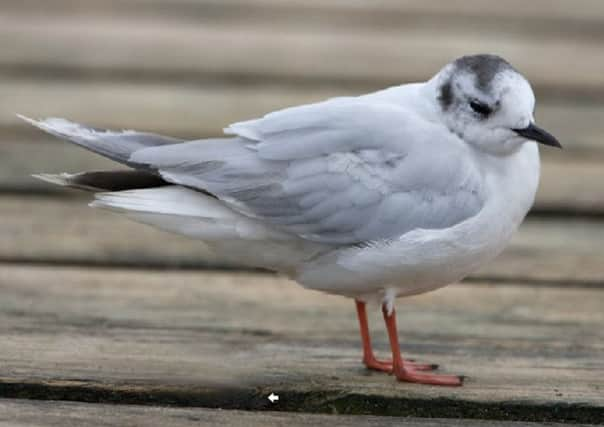Birdwatch: On the lookout for little and large in the seabird world


Little gulls are starting to disperse from breeding sites and numbers on the east coast will increase from now until mid September.
They arrive here from northern Scandinavia, the Baltic and Russia and will move on to spend the winter around the western seaboards of Europe,
Advertisement
Hide AdAdvertisement
Hide AdEast Yorkshire is one of the best places to see them, particularly the freshwater Hornsea Mere where several hundred can come in to feed in the evenings. They also regularly visit the nearby Tophill Low reserve.
Little gulls, because of their small size and thin bills, feed like marsh terns on small insects and, also like terns, swoop low over the water before suddenly dropping down to the surface to snatch their prey.
This year a pair of little gulls has successfully fledged two young at the RSPB’s Loch of Strathbeg reserve in Aberdeenshire, the first time this has happened in the UK.
There have been two previous breeding attempts in Scotland and five in England including the most recent in 2007 at Titchwell, Norfolk and at Fairburn Ings in 1978 where a pair established themselves among a colony of black-headed gulls, built a nest and started to incubate eggs until one of the adults was found dead and the other deserted the nest which was then predated by crows.
Advertisement
Hide AdAdvertisement
Hide AdThe Scottish pair nested on an island among 130 pairs of common terns and this protection, plus fencing around the island, seems to have deterred predators.
Hopefully, more pairs of this delightful gull with its unmistakable smoky grey underwings will breed in this country.
At the other end of the scale a Caspian tern, the same size as a large gull, has been present in the county after crossing the border from the Carr Vale Nature Reserve in Derbyshire.
It was seen circling the Orgreave Lagoons in South Yorkshire on Friday last week before flying off north and the search was on to see where it would arrive next.
Advertisement
Hide AdAdvertisement
Hide AdOn Sunday it was relocated sitting on the tidal mud at Faxfleet on the Humber but, until it took flight, could only be seen from the Alkborough Flats reserve at the other side of the river in North Lincolnshire. It could still be somewhere on the Humber awaiting rediscovery.
The Caspian tern’s most distinctive feature is its large red bill and, when it is with other terns, its large bulky build.
In Europe they breed mainly around the Baltic and Black seas but have a widely scattered distribution also breeding in North America, Asia, Africa, Australia and New Zealand.
Last month two were seen on Tennyson’s Sands at the Gibraltar Point nature reserve on the Lincolnshire coast and also in Norfolk. The Yorkshire sighting is likely to be one of these.
Other sightings included four curlew sandpipers along with 10,000 dunlin at Beacon Ponds where a red-necked phalarope was also seen.